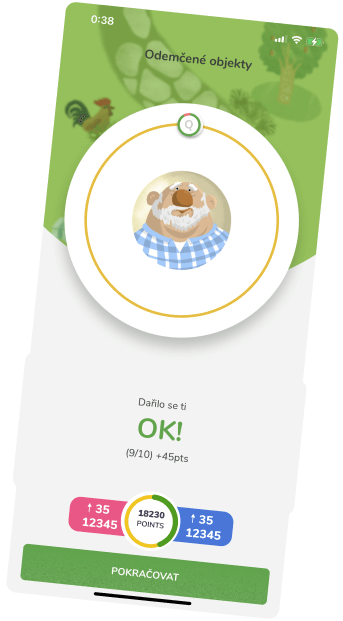The French Baguette : what makes it so special
And learn how to describe bread in French
By Lilia Ahmed Ali
In France, ordering bread is a cultural norm, like saying "bonjour" (good morning) or "thank you" (merci). This is a stark contrast to the quick grab-and-go bread culture. Let’s explore more of the French bread culture together and see what makes the baguette so unique and irresistible.
Did you know that the French baguette is recognized as an intangible cultural heritage of humanity by UNESCO? This French bread has captured the hearts and palates of millions across the globe.
The French baguette: the country's best-known symbol
For many, the French baguette is not just an accompaniment to a meal; it is a cherished daily ritual. Walking into the local “boulangerie” (bakery) to pick out a fresh baguette remains truly one of life's great pleasures. The smell of freshly baked bread is like nothing else.
Distinguishable by its length, its crisp, golden crust and soft, chewy interior, the French baguette is more than just a simple bread. It represents the very essence of French culinary art and a traditional benchmark.
But how did the baguette come to exist?
The history of the French baguette, contrary to what the legends claim, is much more recent and has a more prosocial background.
In the past, the bakers relied on sourdough to make their bread. However, the process tended to be arduous and time-consuming for artisans, who spent the nights and early mornings preparing long loaves of freshly baked bread to supply the bourgeoisie.
But in 1919, a law was passed prohibiting French bakers to work between 10 p.m. and 4 a.m. To ensure that they were still able to offer fresh bread to the bourgeoisie and meet the growing demand, the French bakers invented the baguette, which was quicker and easier to prepare and bake. And with the arrival of steam ovens, the long, slender shape allows it to be ready in just 20 minutes.
To speed up the kneading and baking process, they also replaced “le levain” (sourdough starter) with “la levure” (yeast). This made it possible to offer the French a fresh loaf of bread each morning, and even several times a day.
For a long time reserved for the country's affluent middle classes, the baguette became popular after World War II. Today, it exists in a multitude of forms.
The French baguette vs. other breads: what sets it apart?
What makes a French baguette so tasty and soft? The first secret lies in “les farines” (the flours). The bakeries make sure that the flours used are of the highest quality.
French flours do not contain a high ash content compared with those produced abroad. As a result, they have a much higher percentage of grains and less minerals, giving baguettes and other breads a much better flavor.
The second secret of the uniqueness of the French bread is the dough preparation and the fermentation process. Properly mixed and kneaded dough gives soft, fluffy, and tasty bread.
The third secret lies in the freshness of the bread. To obtain that fluffy and soft aspect, the dough is mixed and baked right on the spot where the loaf is to be baked.
Concerning French baguette baking, it is quite different from other types of French bread. One thing that gives it that moist interior and crispy crust exterior, is steam baking.
What are the different types of French baguettes?
In recent years, the new generation of French bakeries has evolved its offer by introducing new flavors including breads with chocolate, dried fruit or seeds and new shapes of baguettes, for example :
“La baguette classique” (classical baguette). Also called “baguette blanche” (white baguette), it is distinguished by its white crumb and thin crust. Often used for making sandwiches, it can be served with any meal.
“La baguette tradition” (traditional baguette). It has a crispier crust and a more amber, airy crumb, and it is made in the old-fashioned way which makes it one of the most loved breads in France.
“La baguette moulée” (the molded baguette). Its composition is pretty similar to that of the classic baguette. The only thing that differs is that the dough is put into a mold when baking, giving it a more smooth and regular appearance.
“La demi-baguette” (The half-baguette). It is similar to the ordinary one in the preparation process and taste. It differs only in size which makes it perfect for making sandwiches.
“La sarmentine”. This form of baguette originated in south-west France. It's known for its distinctive tips that end in two "horns", giving it the shape of a fork. This type of bread may contain nuts, sesame, celery and other flavors.
“Baguette Viennoise”. It's a long, soft, buttered bread roll, sweet on certain occasions. It can be consumed as a snack or dessert.
What to eat with the Baguette?
French baguettes are served for breakfast, lunch and dinner.
For breakfast, French take a few slices of baguette and cover them with a layer of butter, jam, chocolate paste, honey or creamy cheese, and then enjoy it with a cup of hot coffee or milk.
The French are also big fans of the baguette sandwich. The best-known and most popular ones are : vegetarian sandwiches with "chèvre" (goat's cheese) and tomatoes, tuna drizzled with olive oil and dried herbs, and the most popular of all, the "jambon-beurre" (ham and butter), sometimes served with slices of Gruyère cheese.
The French baguette can also be served with dishes such as onion soup, scrambled eggs with cheese, creamy mushroom sauce, mashed potatoes, chicken soup and some other saucy food.
Learn French vocabulary related to bread
Let's start first with the basics
“La boulangerie” (the bakery)
“Le boulanger” (the baker)
“Le pain” (the bread)
“La croûte” (the crust)
“La mie” (the crumb)
“La levure” (the yeast)
“Le levain” (sourdough)
“La farine” (the flour)
To order a baguette in French
To order a baguette in a bakery, you can say: "Bonjour, je voudrais une baguette, s'il vous plaît" (Hello, I would like a baguette, please).
If you want a particluar type of baguette. For instance, you can say: "Une baguette tradition, s'il vous plaît" (A traditional baguette, please)
If you want many baguettes. For example: "Je prends trois baguettes, s'il vous plaît" (I'll take three baguettes, please).
To ask for particular types of baguettes. For instance, "Avez-vous des baguettes aux céréales ?" (Do you have any whole wheat baguettes?).
To describe the appearance of the bread
“Croustillant” (crispy). Example: “La croûte est incroyablement croustillante” (The crust is incredibly crispy.)
“Croûte” (crust). Example: “Regardez cette belle croûte rustique” (Look at this beautiful rustic crust.)
“Moelleux” (soft). Example: “L'intérieur de ce pain est incroyablement moelleux” (The inside of this bread is incredibly soft.)
“Doré” (golden). Example: “Cette baguette est parfaitement dorée” (This baguette is perfectly golden.)
To describe texture and consistency of the bread
“Aéré” (airy). Example: “La mie de ce pain est légère et aérée” (The crumb of this bread is light and airy.)
“Chewy” (chewy). Example: “Le pain au levain a une texture chewy que j'adore” (The sourdough bread has a chewy texture that I love.)
“Tendre” (tender). Example: “Ce pain est si tendre qu'il fond dans la bouche” (This bread is so tender that it melts in the mouth.)
“Léger” (light). Example: “Ce pain est si léger qu'il se mange sans effort” (This bread is so light that it's effortlessly consumed.)
We hope you've enjoyed reading this article, and learned some more French while exploring the famous baguette.



















